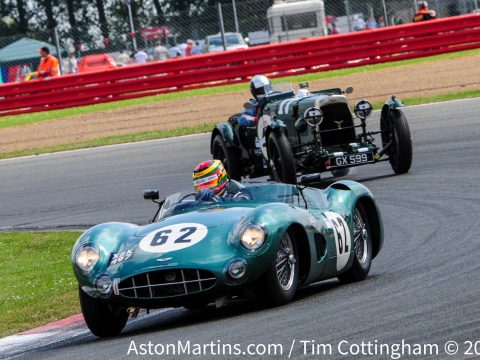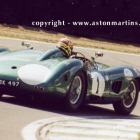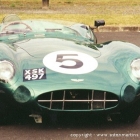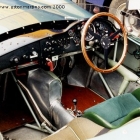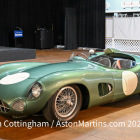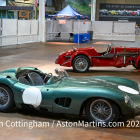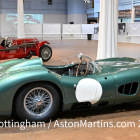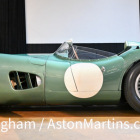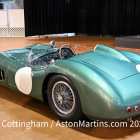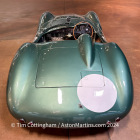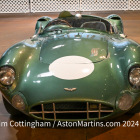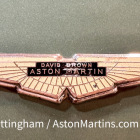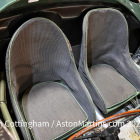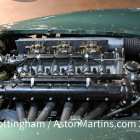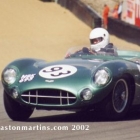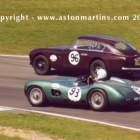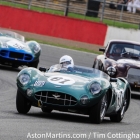Although the car was first raced (unsuccessfully) at Le Mans in 1956 retiring during the 21st hour, success followed during the next three years. Many famous victories were secured by works DBR1’s at the Spa Sportscar Race (1957, Tony Brooks), Goodwood Tourist Trophy (1958, Stirling Moss, Tony Brookes, 1959, Stirling Moss, Carrol Shelby, Jack Fairman) and the 1000 Km at the Nurburgring (1959, Stirling Moss and Jack Fairman), although non so famous as the 1st and 2nd place at Le Mans in 1959. Aston Martin went on to win the 1959 World Sportscar Championship with the DBR1.
DBR1/1
DBR1/2
The car pictured here, both above (main shot) and below is the second of the four works cars (DBR1/2) and when driven by Roy Salvadori and Carrol Shelby was the actual Le Mans winning car. I photographed it during the Brands Hatch AMOC meeting in 2002, the British Empire Trophy Meeting at Silverstone , May 1999 and at Le Mans for the 40th anniversary celebrations of the 1959 win. It is probably the most precious Aston Martin ever made and yet it is a frequent and welcome sight at classic race meetings.
DBR1/3
DBR1/4
Below is DBR1/4, second only to DBR1/2 in the 1959 Le Mans race, driven by Paul Frere and Maurice Trintignant. The car was initially built as DBR3/1 in 1958 but was converted to DBR1 specification after a single race outing.
DBR1/5
In all, four team cars were built plus one single private example (DBR1/5) constructed for the 1959 season for the use of Graham Whitehead.
Later Aston Martins that have been strongly influenced by the DBR1 have been the V8 Vantage Le Mans and the CC100 Speedster Concept.



